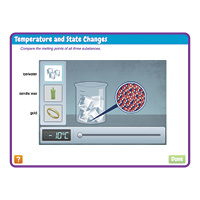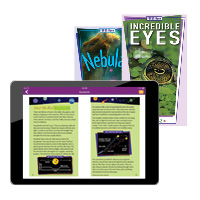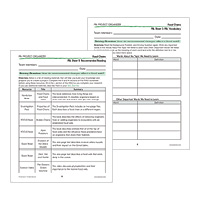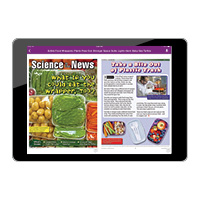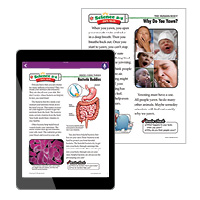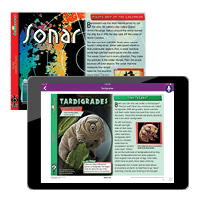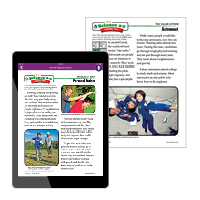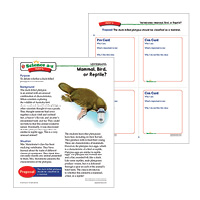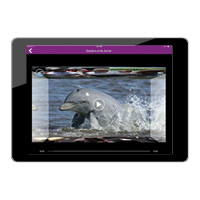Science A-Z provides thousands of resources to teach core science ideas and practices for Grades K-6. In this Breakroom post, we have broken down some of the most engaging and impactful learning resources that you should be using with older students.
Many of the below resources come pre-packed with a variety of projects and activity sheets to encourage students to think critically about the content they have just read, while cross-curricular lesson extensions allow teachers to go deeper and expand student understanding in meaningful ways.
Here are 10 resources that you should be using in your upper elementary classrooms:
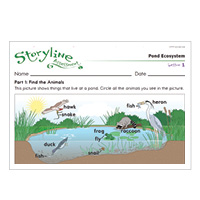
1. Storylines
Storylines foster student engagement in all three dimensions of the Next Generation Science Standards*. Storylines are designed to help students learn Disciplinary Core Ideas and Crosscutting Concepts by engaging in Science and Engineering Practices. Students answer authentic phenomenon-driven questions as they learn about the natural world and design solutions to problems.
* Next Generation Science Standards is a registered trademark of Achieve. Neither Achieve nor the lead states and partners that developed the Next Generation Science Standards was involved in the production of, and does not endorse, this product.
2. Interactive Science Lessons
Put your students in the driver’s seat with virtual science labs designed to teach students to think and act like scientists! Carefully crafted text and corresponding audio walk students through difficult scientific concepts. Each part of the lesson builds on the one before it, helping to scaffold instruction as students master each new concept. The visual and interactive approach supports a variety of learning styles and helps bring the material to life.
3. FOCUS Books
FOCUS stands for Focused Opportunities to Construct an Understanding of Science. These books help students dig deeper into high-interest science topics while helping you address language arts standards, such as the Common Core State Standards, and science standards, including the Next Generation Science Standards.*
4. Project-Based Learning Packs
Science A-Z Project-Based Learning Packs provide resources that encourage students to use creativity, critical thinking, communication, and collaboration skills as they work in teams to investigate an overarching science question or design solutions for an engineering challenge.
5. Science in The News
Science in the News engages your students in the ever-changing world of science. Each issue features compelling news articles for kids written at three reading levels to allow for differentiated instruction. Science in the News provides opportunities to teach critical thinking, inquiry, and the genre-specific, life-long literacy skill of reading the news.
6. Quick Reads
Quick Reads are single-page science resources that address specific science topics for kids and allow students to dig deeper into core science ideas and crosscutting science concepts. Research has shown that success with informational text is critical to a student's future success in higher education and the workplace. Quick Reads use an informational text format similar to magazines to describe each science topic. Reading these short passages provides practice for applying literacy skills in everyday life.
7. Investigation Packs
Investigation Files, or I.Files, feature high-interest, in-depth science content in an engaging design that includes features of informational text, such as graphs, maps, and photographs. Students do a close reading of the I.Files and then cite evidence that helps them solve the Mystery File in each pack through group discussion.
8. Career Files
Inspire the future engineers and scientists of tomorrow with Career Files. These texts help students learn how Disciplinary Core Ideas and Crosscutting Concepts are utilized in real-world jobs, including those in STEM fields.
9. Debates
Debates lay the groundwork for students to develop the important practice of scientific argumentation based on evidence. Students learn to conduct research, form opinions, communicate with peers, consider other points of view, and make new judgments based on arguments supported by evidence. Conducting a debate helps teachers satisfy many national and state-specific ELA standards and 21st century skills related to communication, collaboration, and critical thinking, and gives students the opportunity to practice compromise, empathy, and decision-making.
10. Science Videos
Science A-Z offers engaging and instructional science videos for kids that extend the core concepts of a unit, model real science in action, or serve as virtual field trips, helping students visualize ideas from Science A-Z instructional resources. The videos illustrate science concepts and practices, often showing STEM professionals in action. Each science video is accompanied by Video Discussion Questions to foster critical thinking.
Try these resources with your students!
Download some free sample resources or sign up for a free 2-week trial of Science A-Z. With the trial, you will have access to all the resources above, as well as thousands of others.


